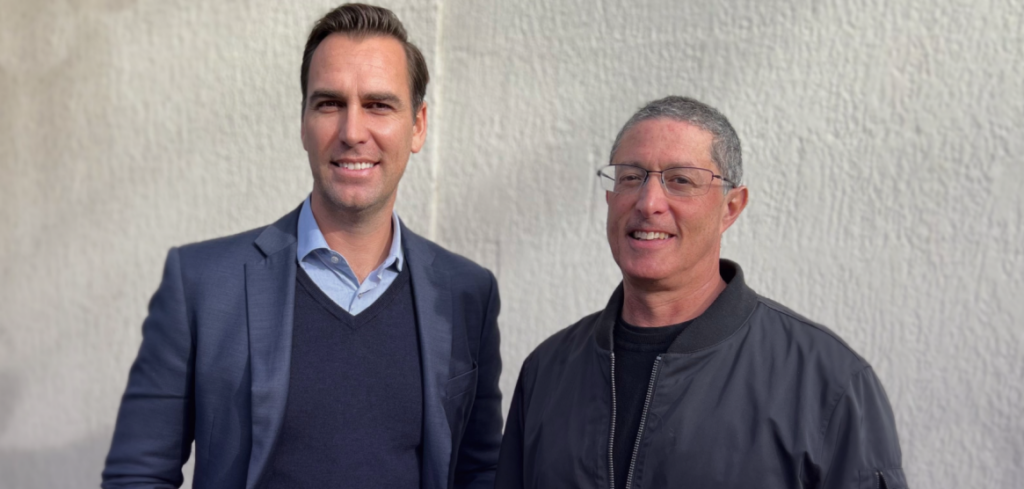This interview was conducted by Caleb Gamble, Sales Director AUS & NZ at Antavo Loyalty Cloud, with Adam Posner, CLMP, CEO and founder of The Point of Loyalty™.
The discussion revolved around the current state of customer loyalty and loyalty programs based on two recent industry reports: For Love or Money™ 2022 from The Point of Loyalty and the APAC Customer Loyalty Report 2022 from Antavo.
Caleb Gamble (Antavo Loyalty Cloud): We live in turbulent times. A recession is sweeping over the world and the future of many brands depends on whether they can meet rapidly-shifting customer expectations — especially Gen Z shoppers. Adam, you’ve recently published For Love or Money™ 2022, an industry-renowned research study that has a decade’s worth of insights, trends, and benchmarking behind it. Which trends did you identify in the latest edition that will continue to impact on the world of customer loyalty and loyalty programs?
Adam Posner (The Point of Loyalty): For the past six years we have been researching loyalty to a brand, beyond enrolling in a loyalty program. A major trend appearing is that loyalty to a brand has become more about emotional connections, instead of just transactional interactions. While transactional loyalty will still exist, there is now more room for building a longer-term and deeper emotional bond with customers — especially with Gen Z shoppers, who are more likely to see loyalty to a brand as an emotional bond based on ‘loving the brand they purchase from’ rather than just transacting.
The second trend we noticed is that data, privacy, and personalisation are remaining at the forefront for customers' minds, with 51% of customers willing to share information about themselves with loyalty programs when they know it will be used to enhance their shopping experience rather than invade their privacy. I still think there is room for improvement here.
Lastly, we are seeing the shift towards digital loyalty cards continue. While 49% of loyalty program members in Australia in 2022 still prefer to use traditional plastic cards, this has decreased from 81% in 2017. Gen Z and Gen Y customers are driving the interest in digital, mobile, and relevant apps when it comes to program identification and interaction. And this is most likely no different in other parts of the world. The younger generations are very digital — always on their phones — so it’s only a matter of time till we move away from the plastic cards.
Caleb Gamble: These are indeed interesting trends that are worth discussing further. Let’s talk about Gen Z customers, who are a prime audience for many companies. What can you tell us about their preferences?
Adam Posner: First and foremost, Gen Z customers are joining more programs than any other generations. According to our research, 13% of Gen Z customers are enrolled in over 10 loyalty programs vs 7% across all members. However, they are also the least active among tracked segments, with only 35% indicating they are active in all of the programs they are enrolled. In the research, an active member was defined as having presented their card or membership number when making a purchase in the past 12 months.
Nevertheless, companies should double down their efforts to capture the hearts of Gen Z. That’s because 84% of Gen Z customers have indicated that their loyalty program membership impacts their decision to purchase from a brand or business. The key to understanding the correlation lies in expectations: we have discovered that Gen Z has the highest expectations towards brands with loyalty programs. In other words, they tend to join a lot of programs but only participate actively in those which meet their high expectations.
Caleb Gamble: In other words, Gen Z is a high effort, but high reward demographic for brands. Have you made similar discoveries regarding other generations?
Adam Posner: Financial benefits, such as discounts, cashback and members-only pricing and so on are generally desired by all generations to some degree, but Baby Boomers, in particular, are significantly more interested in these. Gen X and Gen Y show the highest affinity when it comes to programs that provide choices, like a choice of birthday gift or choice from a catalogue of rewards. Gen Y prefer programs that make life easier for them and save them time, like apps with easy payment or VIP support hotlines. Interestingly women are keener on earning rewards for recycling, while men show more interest in loyalty programs that allow them to earn shares in the company, or involve earning cryptocurrency as rewards. So the point is, loyalty programs should consider a variety of rewards or program propositions in order to cater to the unique needs of different generations and genders.
Caleb Gamble: The sentiment of pivoting away from a solely transactional program model is supported by Antavo’s research, too, in the APAC Customer Loyalty Report 2022. When loyalty program owners were asked whether they would classify their loyalty program as emotional or rational (transaction-driven), 20.7% voted on emotional on the global scale, and 30.3% said the same in Asia-Pacific in particular. Why does the APAC market show such a fondness for emotional loyalty?
Adam Posner: On a baseline level, all programs should have financial benefits because customers expect them to some degree. However, everything that goes above and beyond the transactional rewards creates an emotional connection. Just think about personalisation or experiential rewards. Customers might expect the financial benefit, but they may not expect a personalized birthday gift or even a choice of a birthday gift. A personalised gift has the power to make members stop in their tracks and say: “Wow, I didn’t expect something like this”.
Going the extra mile and delivering extra utility, or an unexpected gift or memorable experiences are what produce joy and gratitude with your customers and with that, greater emotional connection.
Caleb Gamble: And companies seem to be willing to put in the extra effort to stay unique. According to our APAC report, 78.8% of respondents whose company offers a loyalty program plan to increase or significantly increase their investments in customer loyalty over the next three years… and 6 out of 10 program owners say they are interested in revamping their program. Are there any winning loyalty program strategies you could share based on your study?
Adam Posner: Every brand is different, and their customers’ behaviour is different, too, so there is no single winning strategy. In our study, we developed the Collection of Six Currencies that members care about. These include money or financial benefits, experiences or moments of magic, functional or time-saving benefits, personalised rewards or rewards appealing to their ego and sense of exclusivity, being able to choose rewards and connecting with communities and causes or charities. Program owners should navigate between these and come up with their own program proposition, while also ensuring that the overall program experience remains simple, personal and valuable. If brands can create their programs through this framework, they’ll improve the potential of their program’s uniqueness and success.
Caleb Gamble: Speaking of relevancy and loyalty programs that are personal, what can you tell us about the role of loyalty programs when it comes to collecting customer data while also maintaining trust? Because in our research, personalisation ranked second among the most influential loyalty trends in the region.
Adam Posner: When it comes to providing their personal information, the primary concern for 66% of customers in Australia is data security. However, it was also revealed that 45% of all loyalty program members have higher expectations of the use of their data if they are members of a loyalty program. In other words, if you ask for their data, customers expect you to use it to improve their lives.
Caleb Gamble: Lastly, let’s talk about the technical side of loyalty programs, chiefly usability. Next-gen loyalty technology providers, such as Antavo, are pushing towards no-code platforms where CRM executives, marketers, and loyalty team members can manage the program and campaigns without coding knowledge. From an independent loyalty strategist’s point of view, what benefits do no-code platforms offer for both companies and, subsequently, their customers?
Adam Posner: If no-code platforms provide ease of use and wider team access, then this is a huge benefit for companies. If they use a technology solution that offers wider accessibility and less training — all without relying on outside help from the IT department — it will bring more to the table than just saving time. The team will be happier using it and this will motivate more engagement with the program. Technology that is fundamentally intuitive and easy to use generates greater buy-in from the user, resulting in greater productivity and motivation.
If you’re interested in learning more about the research, download the reports at the following links: For Love or Money™ 2022 from The Point of Loyalty and the APAC Customer Loyalty Report 2022 from Antavo.
About The Point of Loyalty
The Point of Loyalty is a strategic customer loyalty and loyalty program consultancy dedicated to driving business growth from existing customers through valuable loyalty and rewards programs. CEO Adam Posner is a customer loyalty strategist passionate about lifting loyalty programs out of the sea of sameness. He has been involved in the design, development and deployment of customer loyalty and rewards programs across industries including entertainment, pharmacy, hotels and accommodation, trade, education, hospitality and retail (various).
About Antavo
Antavo is an Enterprise Loyalty Cloud, providing best-in-class technology to manage experience-based, paid, and lifestyle loyalty programs online, in-store, or on mobile.
Antavo’s no-code, API-centric platform makes the loyalty program experience fully customizable and empowers loyalty and marketing teams to run their program internally, without IT help. Antavo invests 60% of its revenue into its product and issues quarterly product releases.
Antavo is a pure-play loyalty technology vendor recognized by Forrester, Gartner, Loyalty360, and is the preferred choice for loyalty consultants, agencies, and system integrators all over the world. Antavo empowers global clients like BMW, KFC, Lagardère, Kathmandu, Luisaviaroma, and BrewDog. For more information, visit antavo.com.
Media Contacts
The Point of Loyalty
Adam Posner
CEO
adam@thepointofloyalty.com.au
Antavo
Eva Bacsi
Marketing Director
eva.bacsi@antavo.com



